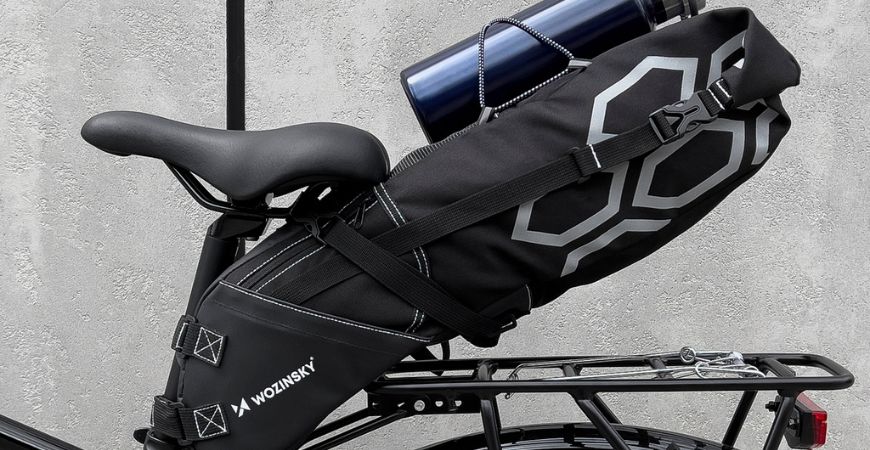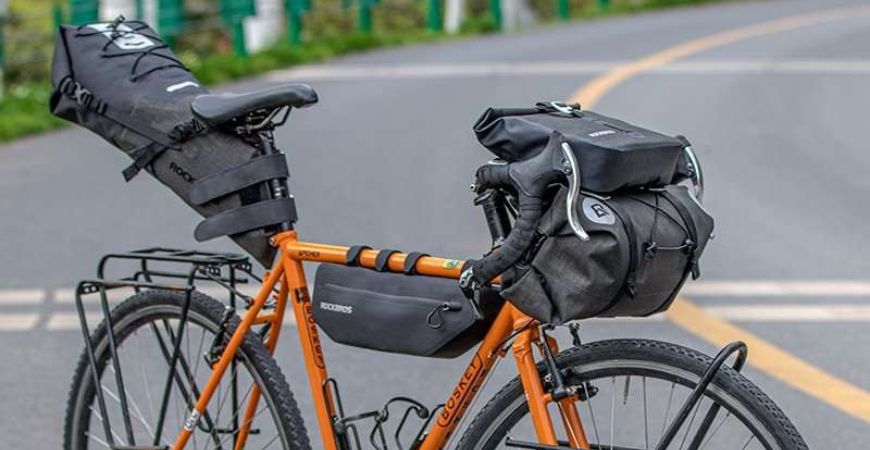Bike bag - varieties and diferences
BIKE BAG - VARIETIES AND DIFFERENCES
Sooner or later, each of us has to think about where to place this or that luggage during a bicycle ride. Whether it is a regular ride, a daily commute or, better yet, a camping trip, cyclists always have plenty of useful "junk" to carry with them. The problem of carrying necessary goods and personal items is especially acute on hot summer days. In such conditions it is not very comfortable to fill your pockets with keys and phones, and even an empty backpack on your back creates the effect of a sauna. When it comes to long trips or hikes, bike panniers are definitely the right choice. They help not only to increase the amount of cargo carried, but also to properly distribute the weight on the bike. Also, thanks to the various installation positions and sizes of the bags, you will be able to properly arrange the things you need so that they are always within reach and don't take a long time to find.

The frame bag on the front is a great alternative to a saddle bag, with some positive additions: you can conveniently attach a smartphone to it and it's always handy. You can access the inside of this bag without getting off the bike, making your daily life much easier. The bag is mounted on the top tube of the bike frame and attached to the head tube with elastic Velcro straps.

The bag in the frame is often used as an additional reservoir for useful items. But it can also be the main place to store luggage. The main advantage of these types of bags is the minimal impact on the bike's handling. No matter how much you load inside such a bag, you will not notice a deterioration in handling (unless there is a whole keg of beer;). There are front and rear frame bags. The front is mounted at the front of the frame closest to the head tube, while the rear is attached to the top tube and seat tube. Which one is best? First of all, you should start with the characteristics of your bike frame and the accessories already installed on it, such as a water bottle or pump. Most often, this problem occurs on bikes with a small frame Rostov, as well as on models with nonstandard geometry. If you are going on a long trip and need to take a lot of things with you, you can safely use both mounting options. This will greatly lighten other parts of the bike, which are also equipped with luggage bags.

A bicycle bag on the handlebars Is a very convenient thing, in fact. It contains enough useful things that will always be at hand. Cyclists often carry photographic equipment, electronics and topographic maps in such bags. As for the ordinary cyclist, here you can stash a tray with food for work or put all your things from a wallet and a smartphone to a bike kit, and there will still be room for a warm jacket. Such a bike bag has a fixed attachment on the handlebars and is joined to it with a slight movement of the hand. If you need to go away and leave your bike in the parking lot, you can take all your valuables in one go. Handlebar bags also have a protective rain cover in case of rain or drizzle. One of the most important advantages of handlebar bike panniers is a special device for topographical maps and travel brochures, which allows you to stay on your path and follow your route without interrupting your journey.
Velobaul (trunk) - cannot be said to be an exclusively tourist type of bag. Very often, touring bags are used on city bikes to carry a large amount of necessary things. Bike panniers can be monolithic (completely one-piece product) or modular (the top and each side wall are detached separately). The main purpose of trunks is to carry bulky things. This includes clothes, shoes, hygiene products, dishes, kitchen items, and much more. We can say that a bike bag is a small pantry for a cyclist. There are front and rear bike racks. The rear ones have much larger volumes and are designed to carry a large amount of payload. While the front ones are limited by clearance for things, as they are mounted on the front fork and, with a heavy load, can greatly impair both road visibility and bike control.

